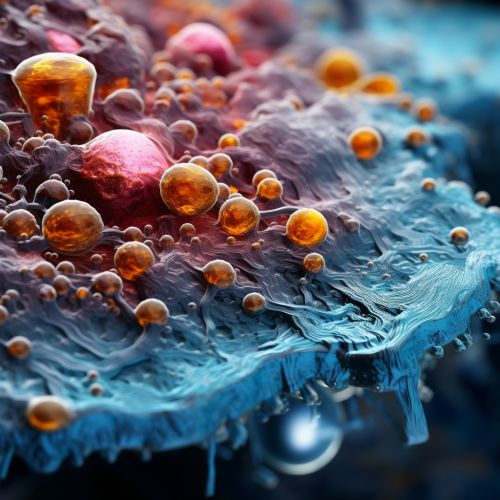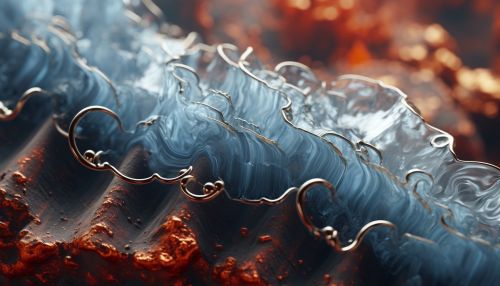Exoelectrogenesis
Overview
Exoelectrogenesis refers to the biological process by which certain types of bacteria, known as exoelectrogens, generate electricity during the process of metabolizing organic matter. This process is a form of anaerobic respiration, where the exoelectrogens use a solid electron acceptor, such as a metal oxide, instead of oxygen. The phenomenon of exoelectrogenesis has been studied extensively in recent years due to its potential applications in bioelectrochemical systems such as microbial fuel cells and wastewater treatment.


Mechanism of Exoelectrogenesis
The mechanism of exoelectrogenesis involves the transfer of electrons from the bacterial cell to an external electron acceptor. This is achieved through a series of redox reactions that take place within the bacterial cell. The process begins with the oxidation of an organic substrate, such as glucose, which generates electrons and protons. These electrons are then transferred through a series of electron carriers, known as the electron transport chain, to the cell membrane.
At the cell membrane, the electrons are transferred to extracellular electron acceptors through a variety of mechanisms. Some exoelectrogens, such as those in the genus Geobacter, use conductive pili, also known as nanowires, to transfer electrons directly to the electron acceptor. Other exoelectrogens, such as those in the genus Shewanella, use soluble electron shuttles or outer membrane cytochromes to facilitate electron transfer.
Exoelectrogenic Bacteria
Exoelectrogenic bacteria are a diverse group of organisms that are capable of exoelectrogenesis. These bacteria are typically found in environments where oxygen is scarce, such as in soils, sediments, and the guts of animals. Some of the most well-studied exoelectrogens include species in the genera Geobacter, Shewanella, and Rhodoferax. These bacteria are capable of using a wide range of electron acceptors, including iron and manganese oxides, and can metabolize a variety of organic substrates.
Applications of Exoelectrogenesis
The ability of exoelectrogens to generate electricity has led to their use in a variety of bioelectrochemical systems. One of the most promising applications is in microbial fuel cells, which use exoelectrogens to generate electricity from organic waste. These systems have the potential to provide a sustainable source of energy and to reduce the environmental impact of waste disposal.
Exoelectrogens are also used in microbial electrolysis cells, which use electricity to drive the production of hydrogen gas from water. This process has the potential to provide a sustainable source of hydrogen, which can be used as a clean fuel.
In addition, exoelectrogens are used in bioelectrochemical wastewater treatment systems. These systems use exoelectrogens to remove organic pollutants from wastewater, while simultaneously generating electricity.
Challenges and Future Directions
Despite the potential of exoelectrogenesis, there are several challenges that must be overcome before these systems can be used on a large scale. One of the main challenges is improving the efficiency of electron transfer from the bacterial cell to the electron acceptor. This requires a better understanding of the mechanisms of exoelectrogenesis and the development of new materials and technologies to facilitate electron transfer.
Another challenge is scaling up bioelectrochemical systems to a size that is practical for industrial use. This requires the development of new designs and technologies that can accommodate large volumes of waste and generate significant amounts of electricity.
Despite these challenges, the field of exoelectrogenesis is rapidly advancing, and it is likely that these systems will play an important role in the future of sustainable energy and waste management.
